
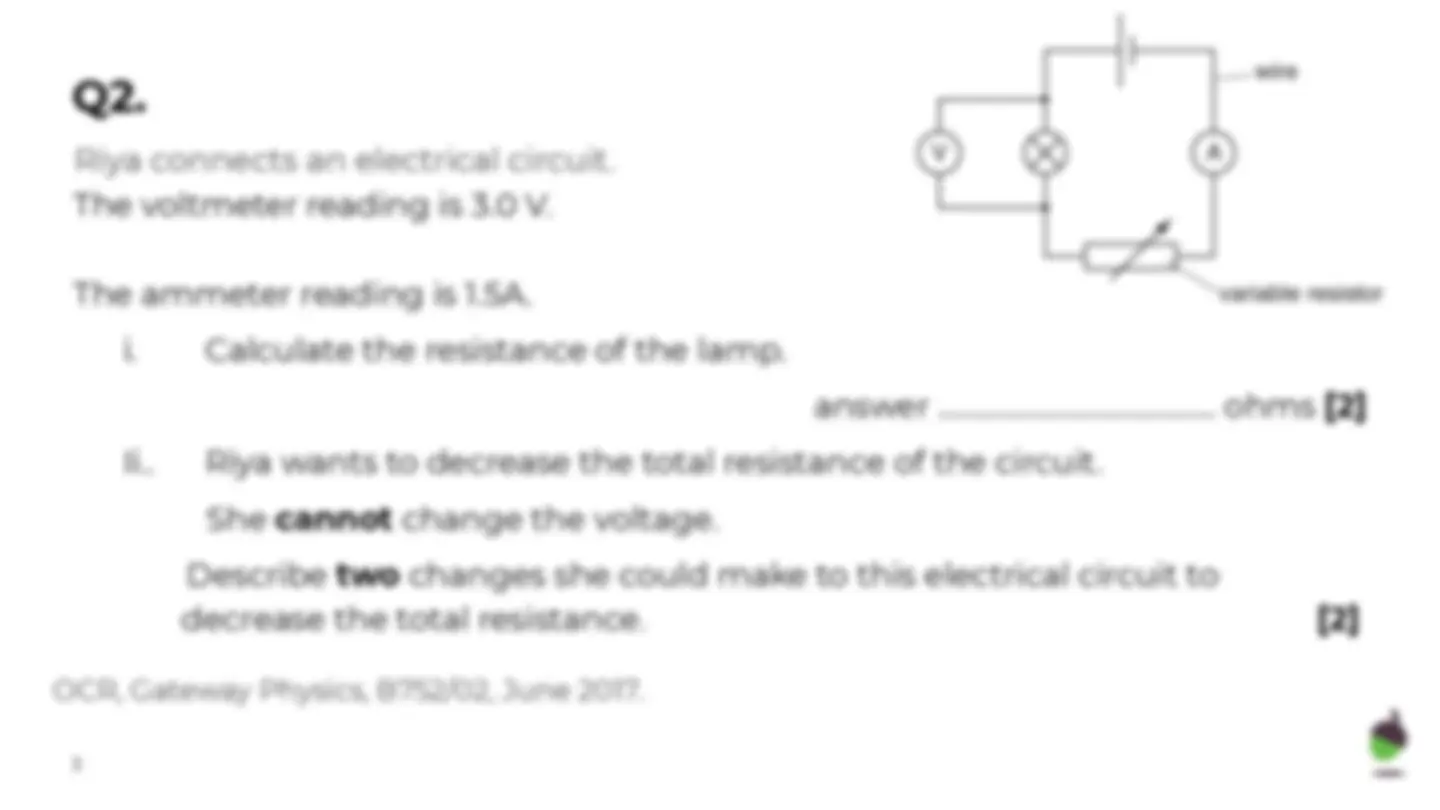

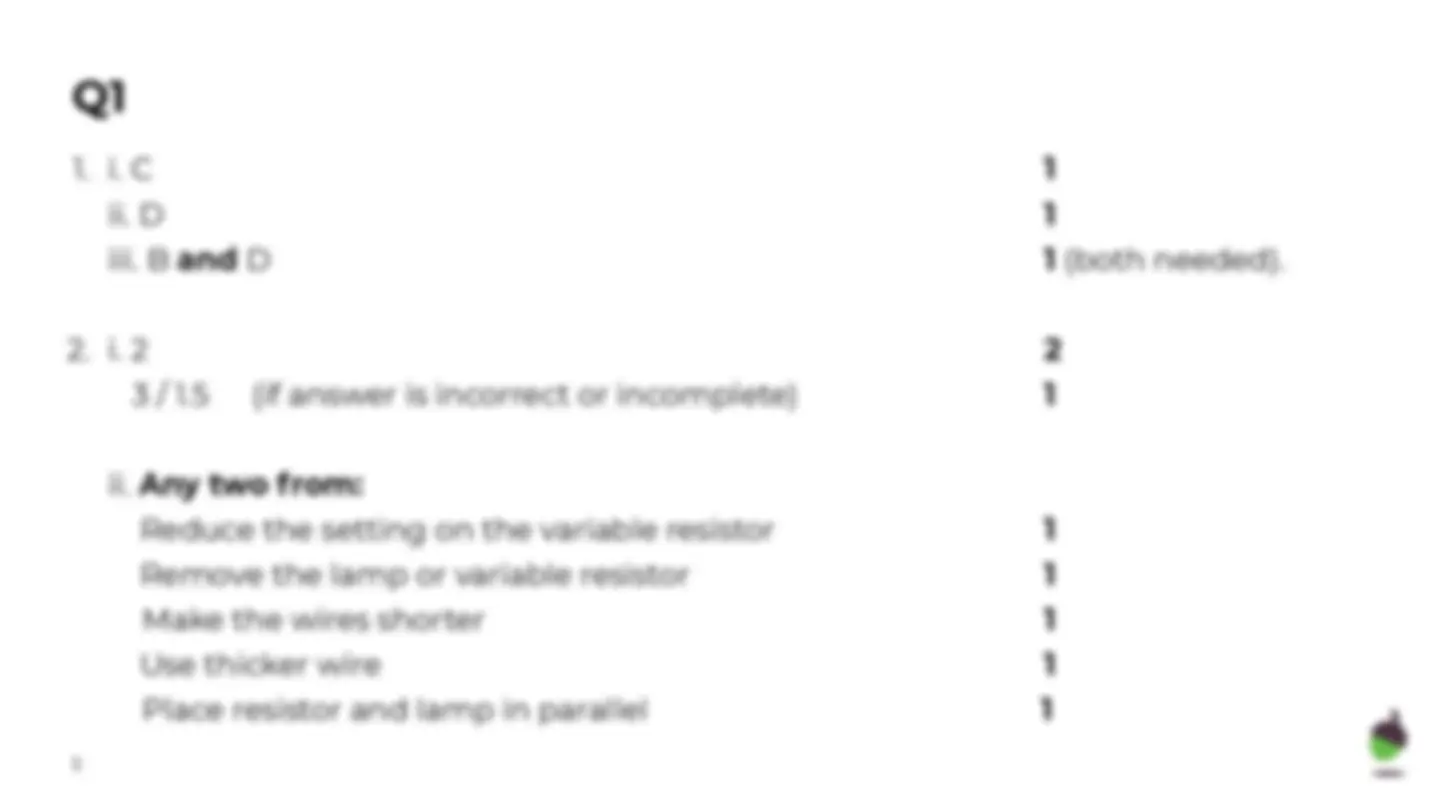
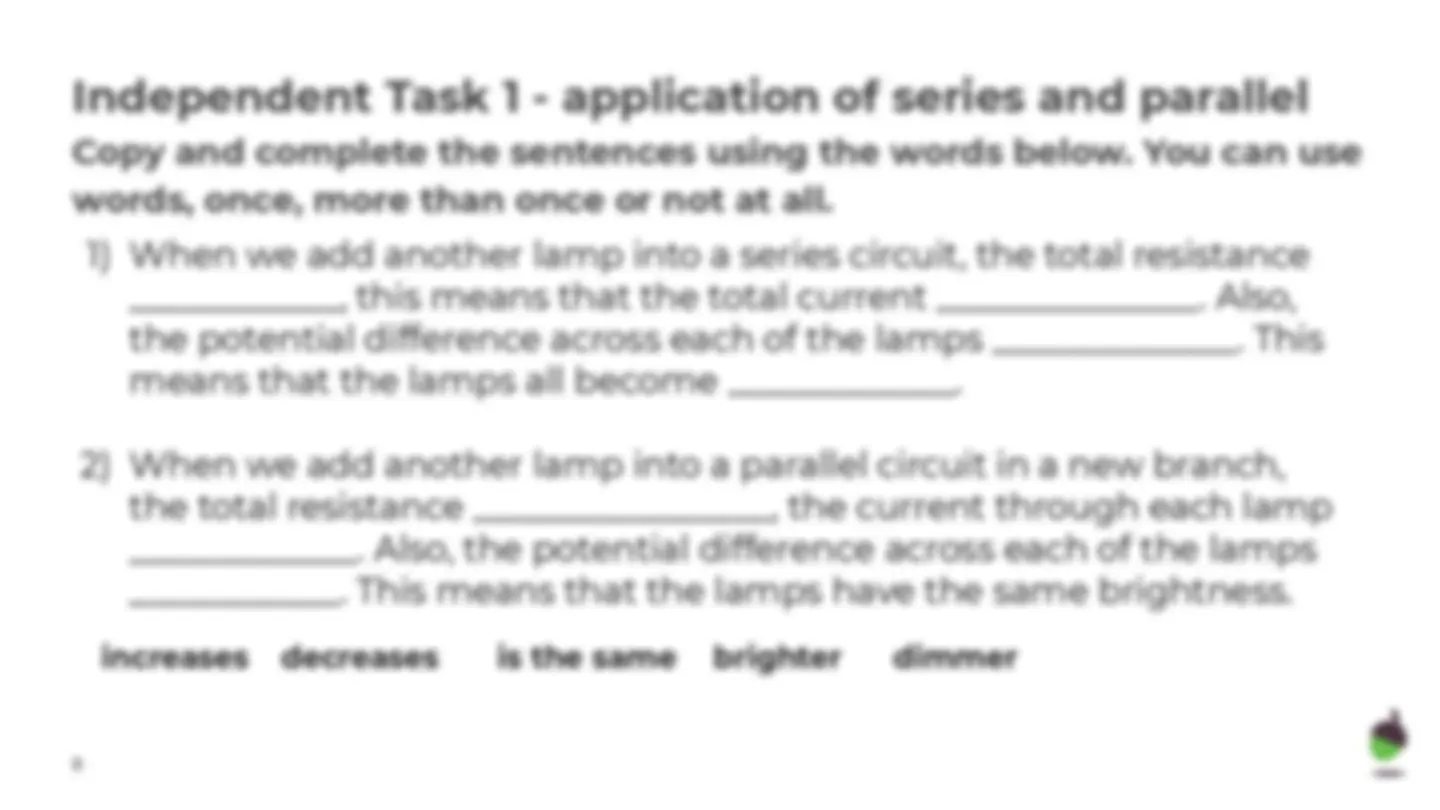
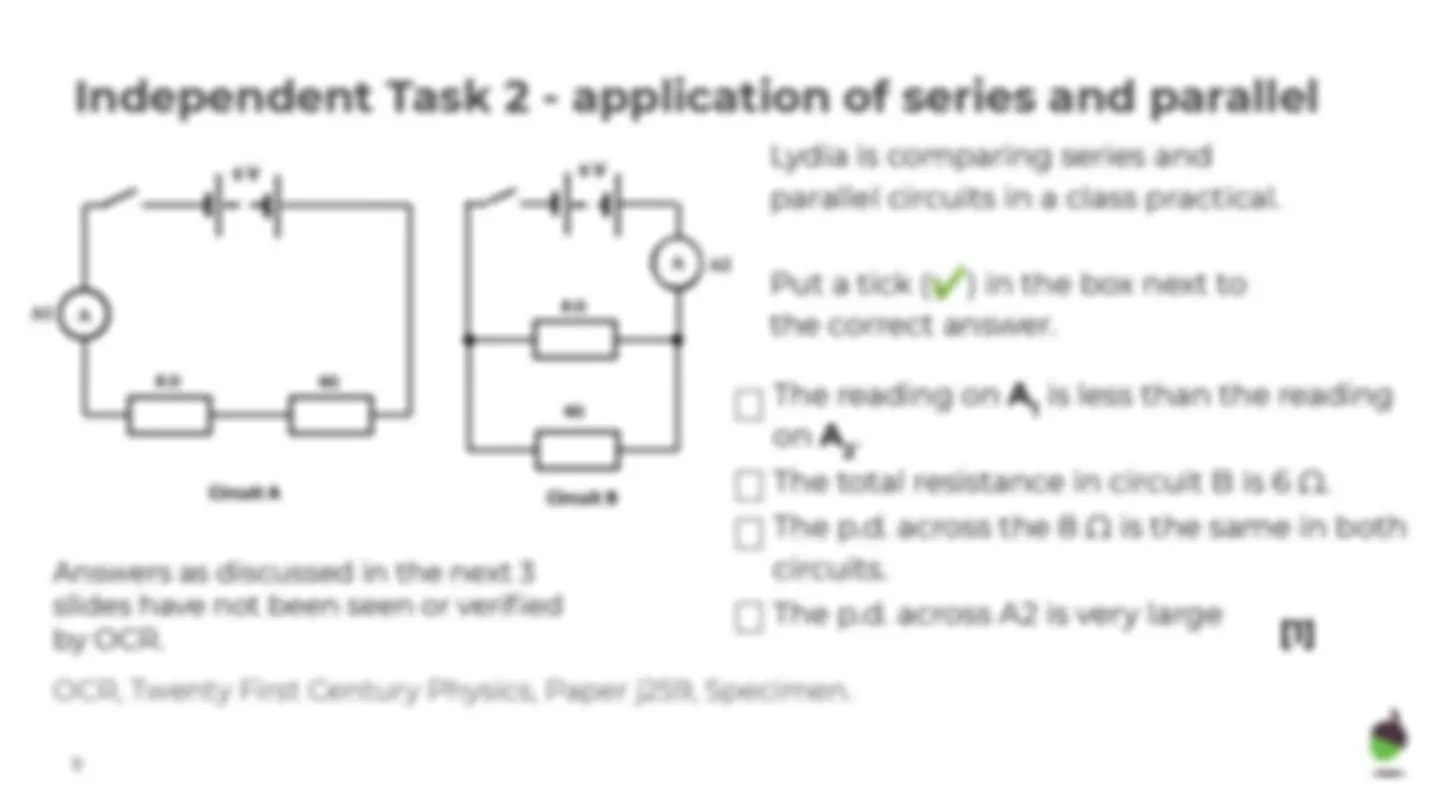
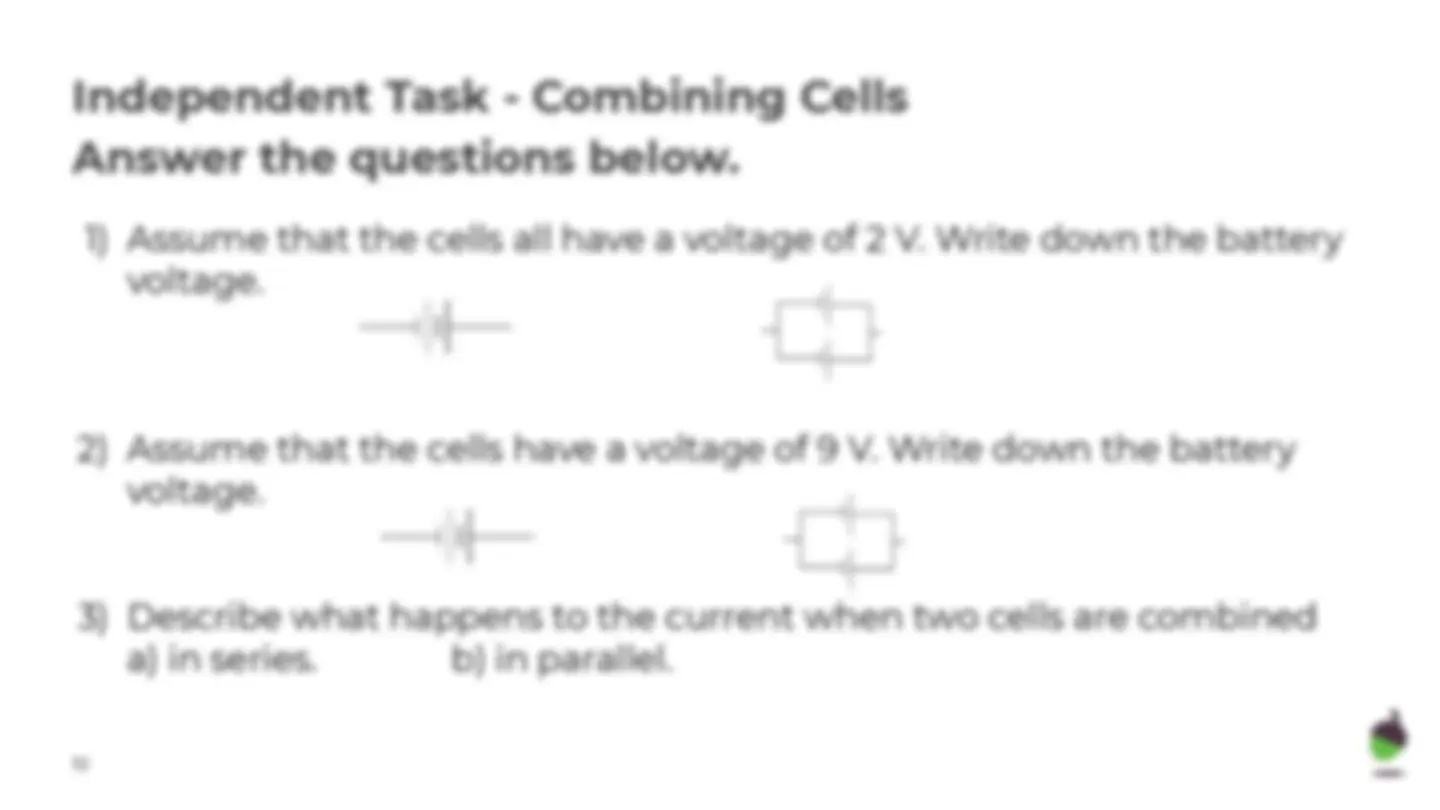


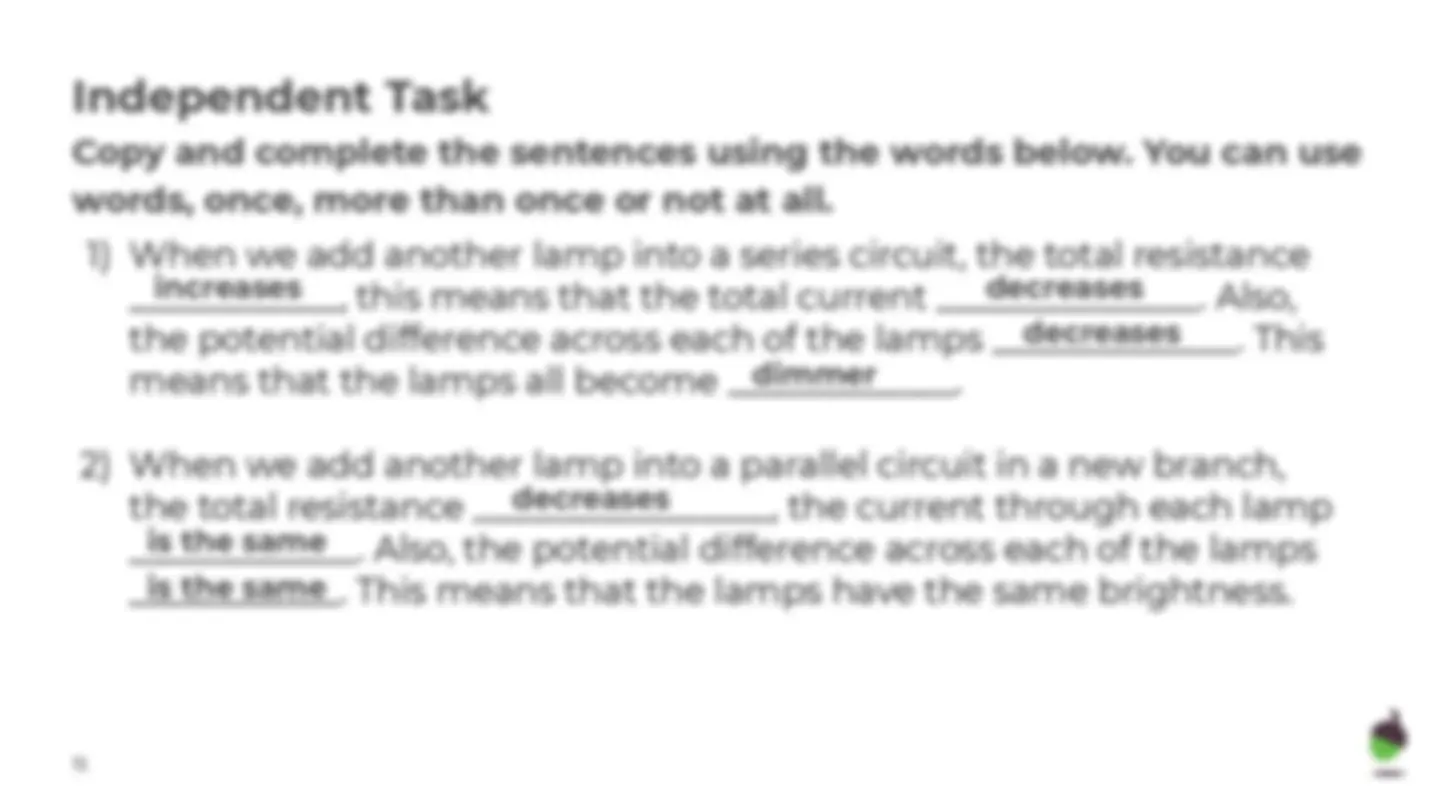
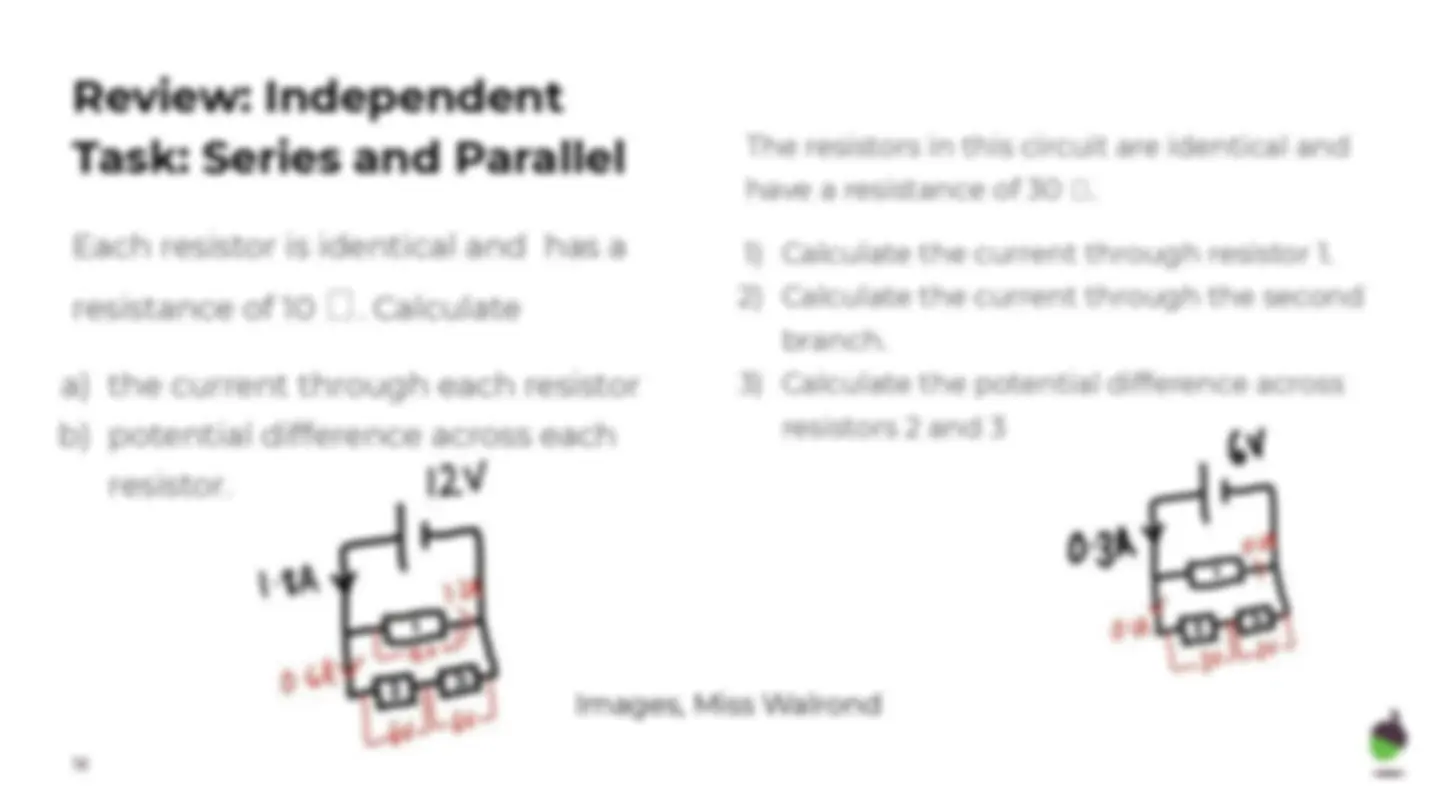


Study with the several resources on Docsity

Earn points by helping other students or get them with a premium plan


Prepare for your exams
Study with the several resources on Docsity

Earn points to download
Earn points by helping other students or get them with a premium plan
Community
Ask the community for help and clear up your study doubts
Discover the best universities in your country according to Docsity users
Free resources
Download our free guides on studying techniques, anxiety management strategies, and thesis advice from Docsity tutors
Riya wants to decrease the total resistance of the circuit. She cannot change the voltage. Describe two changes she could make to this electrical circuit to.
Typology: Lecture notes
1 / 18

This page cannot be seen from the preview
Don't miss anything!











Alyssia is doing electricity experiments. Alyssia investigates the current in circuits made from cells and lamps. All the cells are alike and all the lamps are alike. Here are four circuits she connects up. Each circuit contains an ammeter.
(i) The ammeter in this circuit has the smallest reading. [1] (ii) The ammeter in this circuit has the greatest reading. [1]
(iii) In these TWO circuits the lamps are connected in
parallel.
and [1]
For each statement choose the correct circuit.
Put a letter A, B, C or D in each box to show your choice.
You can use each letter once, twice or not at all.
OCR, Twenty First Century Physics B, A182/01, June 2017.
Copy and complete the table using the text below.
(Hint: you will need to sort the statements)
Series Parallel
Current
Potential difference
The current is the same through each component.
The potential difference splits between components. The potential difference across each branch is the same.
The current splits between branches.
Copy and complete the sentences using the words below. You can use
words, once, more than once or not at all.
When we add another lamp into a series circuit, the total resistance ____________, this means that the total current _______________. Also, the potential difference across each of the lamps ______________. This means that the lamps all become _____________.
When we add another lamp into a parallel circuit in a new branch, the total resistance _________________, the current through each lamp _____________. Also, the potential difference across each of the lamps ____________. This means that the lamps have the same brightness.
increases decreases is the same brighter dimmer
Assume that the cells all have a voltage of 2 V. Write down the battery voltage.
Assume that the cells have a voltage of 9 V. Write down the battery voltage.
Describe what happens to the current when two cells are combined a) in series. b) in parallel.
OCR, Twenty First Century Physics, Paper A182, June 2016.
Tim sets up this parallel circuit.
i. What is the voltage between points X and Y? voltage = ......................................................................... V [1] ii. All the resistors have the same resistance.
What is the current through point Z?
current = ......................................................................... A [1]
Series Parallel
Current The current is the same through each component.
The current splits between branches.
Potential difference The potential difference splits between components.
The potential difference across each branch is the same.
Answers as discussed in the next slide have not been seen or verified by OCR.
OCR, Twenty First Century Physics, Paper j259, Specimen.
Lydia is comparing series and parallel circuits in a class practical.
Put a tick (✔) in the box next to the correct answer.
The reading on A 1 is less than the reading on A 2. The total resistance in circuit B is 6 Ω. The p.d. across the 8 Ω is the same in both circuits. The p.d. across A2 is very large [1]
Assume that the cells all have a voltage of 2 V. Write down the battery voltage.
Assume that the cells have a voltage of 9 V. Write down the battery
voltage.
a) in series. The current will increase. b) in parallel. The current will increase.